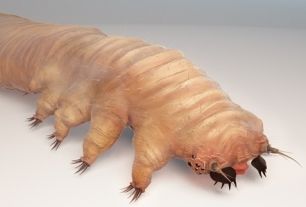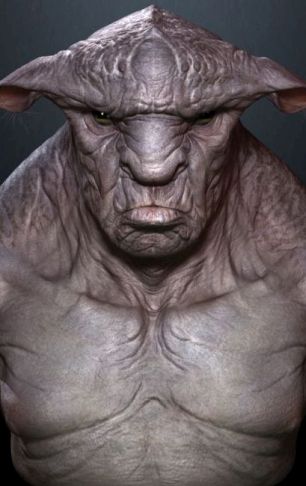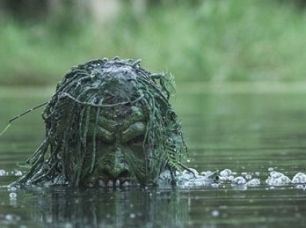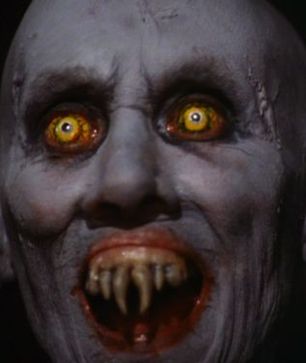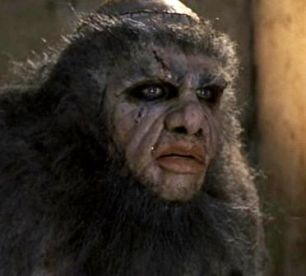Chuluurkhag
I recently rewatched Horror Express. Here’s the monster from that movie imagined as a recurring villain for Amazing Adventures, published by Troll Lord Games.
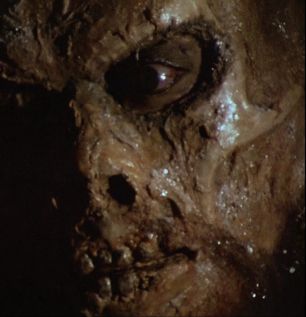
Chuluurkhag, a nearly immortal alien being, came to our world hundreds of millions of years ago as part of an exploratory mission. Due to circumstances beyond its control, it was left behind when the mission departed. Chuluurkhag used its psychic powers to survive, transferring its consciousness from one primitive life form to another, gradually taking control of more advanced animals until it assumed control of an early hominid, an event that put the alien onto the path toward a human guise. Chuluurkhag’s painfully slow ascent of the evolutionary ladder came to a halt during the last major ice age when it fell into a glacial crevasse. There it remained, trapped in a frozen, dead body in a cave in Manchuria until discovered by Alexander Saxton, a renowned British anthropologist affiliated with the Royal Geological Society.
Chuluurkhag reanimated the thawing body it had been trapped within for centuries. As its strength returned, it used its psychic powers again, transferring its consciousness into a Russian police inspector named Leo Mirov. After this, Chuluurkhag bided its time aboard the Trans-Siberian Express. Still occupying Mirov’s body, Chuluurkhag vanished shortly after arriving in Moscow. Its current whereabouts are unknown, but members of the Brotherhood of William St. John believe that a recent spate of strange murders by dissection in Whitechapel, London, show signs of an alien and malevolent intelligence. Could the Brotherhood have stumbled upon Chuluurkhag?
Chuluurkhag: # Enc 1; SZ as current form; HD as current form; Move as current form; AC as current form; Atk as current form; Special animate dead, drain memory, psychic transfer; Sanity 1/1d4; SV M; Int High; AL LE; Type aberration; XP as current form with one additional Special II ability and two additional Special III abilities.
Animate Dead: Chuluurkhag can animate the corpses of any creature it recently has killed via psychic transfer. This functions as the spell of the same name, except that Chuluurkhag animates one zombie per round it concentrates on the task. Chuluurkhag’s zombies obey its mental commands.
Drain Memory: Chuluurkhag gains the skills of whatever creatures it kills via psychic transfer, and Chuluurkhag has killed many over the millenia. As such, Chuluurkhag can be assumed to have at least a +2 bonus for pretty much any skill check imaginable. At the GM’s discretion, Chuluurkhag’s bonus may be even higher, maybe even as high as +6, especially when it comes to Knowledge skills.
Psychic Transfer: Chuluurkhag properly exists today only as mental energy. As such, it is both limited to the strengths of its current form and nearly impossible to kill. Regardless of form, Chuluurkhag’s main attack is psychic. Any living creature that meets Chuluurkhag’s gaze can be subjected to this attack should Chuluurkhag will it. A saving throw resists the attack, but a new saving throw must be made each time a victim meets Chuluurkhag’s gaze. Failing this saving throw paralyzes the victim as long as Chuluurkhag maintains contact. Each round, the victim loses 1d6 points of Intelligence and Wisdom. If both Intelligence and Wisdom reach 0, the victim dies and Chuluurkhag gains all of the victim’s skills and memories. If it wishes, Chuluurkhag may transfer its consciousness into the victim’s body, animating and using the body as its own.
If Chuluurkhag is reduced to 0 hit points, it abandons its current form and unleashes its full psychic might against the nearest creature within 120 feet. The victim suffers 3d6 points of Intelligence and Wisdom drain. A successful saving throw halves this damage. If this attack reduces the victim’s Intelligence and Wisdom to 0, Chuluurkhag takes control of a new host.

